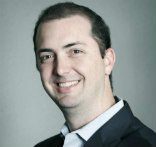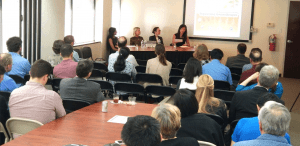One thing was evident by the 2018 celebration of the Maryland Tech Council’s Lifetime Achievement Awards; we live among the greatest minds of our time. Literally. We live among them. They are our neighbors.
No other region in the world is there such a concentration of scientific genius and servant leaders as there is here in Maryland. NIH in Bethesda and the NCI in Rockville are home to many of the worlds foremost experts in their fields of scientific research who have made countless contributions to mankind, and it’s right down the road. Thousands of researchers, operating working under a $37 billion budget, make breakthrough discoveries every day at work, then hang up their lab coats and go home to watch their kids lacrosse games at Maryland schools, meet their friends at Maryland restaurants for dinner, and enjoy concerts at Maryland venues. Our neighbors are some of the top minds in the world.
Tonight’s awardees represented three of those great minds. Each represented a resume of accomplishments which showed an unparalleled commitment to pushing the boundaries of science to improve human health and to save lives. However, it was the human side for each of them that shined the brightest at this event and inspired the crowd of local business leaders. Their awareness of who sat in the audience before them was also clear by the tone of their acceptance speeches.
NIH Director, Dr Francis Collins, who just 15 years ago first sequenced the human genome as the leader of the human genome project, humbly accepted the award and reflected on the remarkable time and place we live in to produce mind-blowing science and discovery. “We are fortunate at NIH to live in such a vibrant community.” Dr Collins said as a proud Marylander, “In such a remarkable place with such talent and such a support system. And to have as colleagues and neighbors all of you in this room who represent such remarkable innovative attitudes within life science, within IT, within health IT, and in cyber, and all that goes on in this state up and down the 270 corridor. The Maryland Tech council does a wonderful job of gluing together all of these great ideas, policies and people who make this ecosystem an even more exciting place.”

Dr. Francis Collins, M.D., Ph.D. – Director, National Institutes of Health
Dr Collins also gave an energetic rally cry pronounced, “Look out San Francisco, San Diego, look out Boston. Maryland is clearly emerging as a remarkable place to do great science…” What an appropriate time for such a strong claim too, given the fourth annual BioHealth Capital Region Forum less than a week away where 1,000 regional leaders and scientists gather to help grow this region into a top 3 Biotech Cluster by 2023. “The private sector here which is wonderfully vigorous in ways that we (NIH) greatly enjoy as we can work together so closely,” regarded Dr. Collins.
There were lots of business leaders in the room shaking their heads with him in agreement who may have all seemed a bit more empowered and grateful hearing the credit Dr. Collins was giving to the region and the work they have done to grow it. What great validation too for MTC’s CEO, Tammy Howie, who last year lead the uniting of the state’s Biotech and Tech communities under one Maryland Tech Council for the first time which created a unified voice for all technology innovation in Maryland.
The next two recipients, highly distinguished scientists and long-time colleges from the National Cancer Institute, Dr. Doug Lowy and Dr. John Schiller, who’s collaborative work to understand and prevent HPV infection has led to the approval of three preventive HPV vaccines by the U.S. Food and Drug Administration. Each had a tone that resonated with Dr. Collins’ that seemed to be a call to action for the business leaders in the room.

John Schiller, PH.D. – Deputy Lab Chief, Laboratory of Cellular Oncology, Center for Cancer Research, National Cancer Institute
Douglas Lowy, M.D. – Lab Chief, Laboratory of Cellular Oncology, Center for Cancer Research, Deputy Director, National Cancer Institute
Dr. Lowy recognized that he and Dr. Schiller were getting the award because of technology but was quick to point out that NIH can be involved in technology development, but the scale up and development is on the shoulders of the biotech industry and companies in the room. He credited Novavax and Medimmune as being instrumental in the vaccine development, and GSK for taking a chance on sub-licensing it from MedImmune since there was really no precedence that a vaccine such as theirs would work on a localized virus. “A lot of credit should to to the manufacturers for taking a chance on this.” Dr. Lowy said. He then concluded very eloquently to the business audience, “We believe that local is good. Technology development is essential for making things better and disseminating it to the world.”
Dr. John Schiller was the last to accept his award and he had a very clear message that couldn’t have been missed.
“I give you all a task,” Dr. Schiller said, “Do better at exploiting the NIH.”
He speculated that if asked, many local Biotech’s would say that part of why they were located in Maryland was because of NIH. Then challenged the leaders again to evaluate if they were fully exploiting the potential interactions with the institute. It isn’t the CRADA’s and technology licensing opportunities he was referencing, but rather the informal interactions with NIH scientists who could open companies eyes to things that they aren’t even thinking of yet.
Three pieces of advice he offered to help business leaders with this challenge were;
- The NIH can’t provide exclusive information, but they can keep secrets about who they discuss it with.
- They can’t be paid advisers – “You have to take our advice for free or not at all,” he joked.
- Companies can’t pay their travel costs if they want to speak with them. That’s not a problem in Maryland because you can come and talk to them for free, and they don’t have to spend their money to talk to you.
Increased local engagement with NIH is a two way benefit since NIH mandate to take ideas and transfer them to companies for the benefit of the public. The vital role that Dr. Schiller highlighted was that more industry interactions with NIH scientist will teach them about industry culture, what industry is focused on, and what constraints there are which most NIH scientists don’t understand. “Doing more of this informal interaction will help NIH scientists understand that their brilliant idea is a complete non-starter for a company and they own’t get frustrated by it,” he pointed out.
Probably one of his most compelling points to support the investment in more NIH interaction was that it will make for better business decisions. If NIH scientists understand industry better they will be more efficient and intentional with their pre-clincial and clinical data which would make it more attractive for a company to invest the $100s of millions of dollars in to commercialize. Industry may take it for granted that that certain business concepts are known in basic research, but it was clear that everyone will benefit if researchers know how far they have to take their research before a company will spend their money.
“We can’t teach people that at NIH,” Dr. Schiller concluded, “It’s your job to come out and talk to us, give advice, get knowledge, help build investment plans with the NIH scientists who don’t understand those sorts of things, and therefore move our research along in more product ways to transfer better technology to you.”
The message was clear, and I’m sure that many of those business leaders in the audience will taking that message along with them the first Maryland Tech Transfer Summit this week at NIST and beyond as they think long and hard if they are fully exploiting the great NIH asset we have right here in our state.
Congratulations to each awardee on a lifetime of achievement and for inspiring so many to achieve more in their lives.
There is no better way to close this reflection than to use the closing remarks of Dr. Collins himself.
The task is not to foresee but to enable the future.” – Dr. Francis Collins
Author:
Chris Frew, @biobuzzMd
chris @ biobuzz.io
- About the Author
- Latest Posts
Over the past 11 years, Chris has grown BioBuzz into a respected brand that is recognized for its community building, networking events and news stories about the local biotech industry. In addition, he runs a Recruiting and Marketing Agency that helps companies attract top talent through a blended model that combines employer branding and marketing services together with a high powered recruiting solution.




